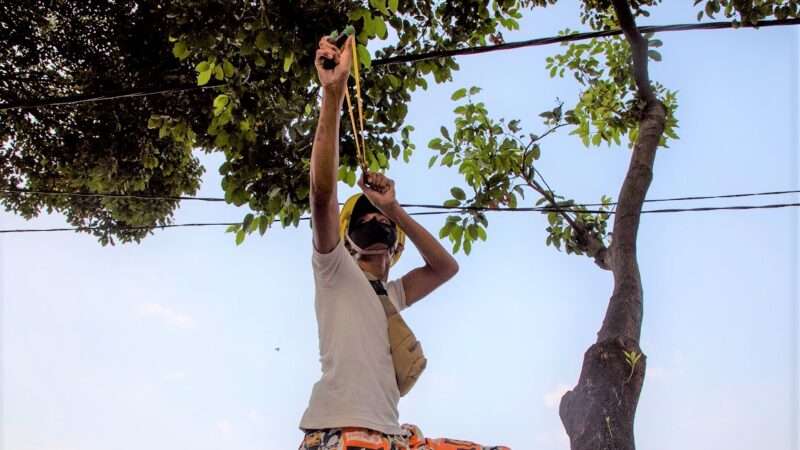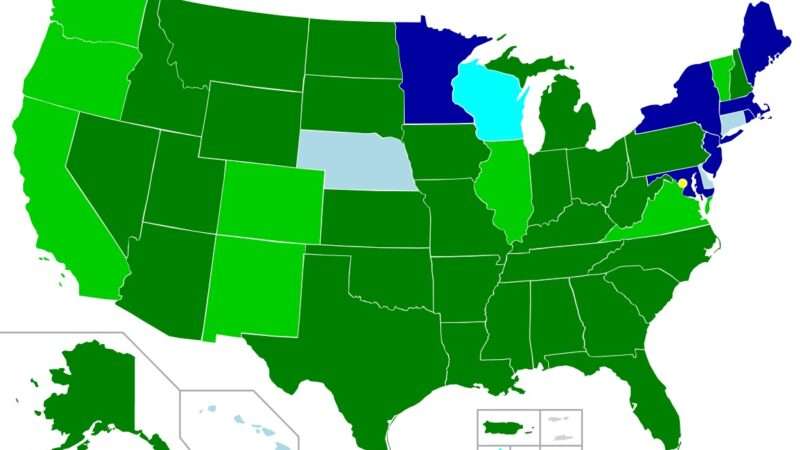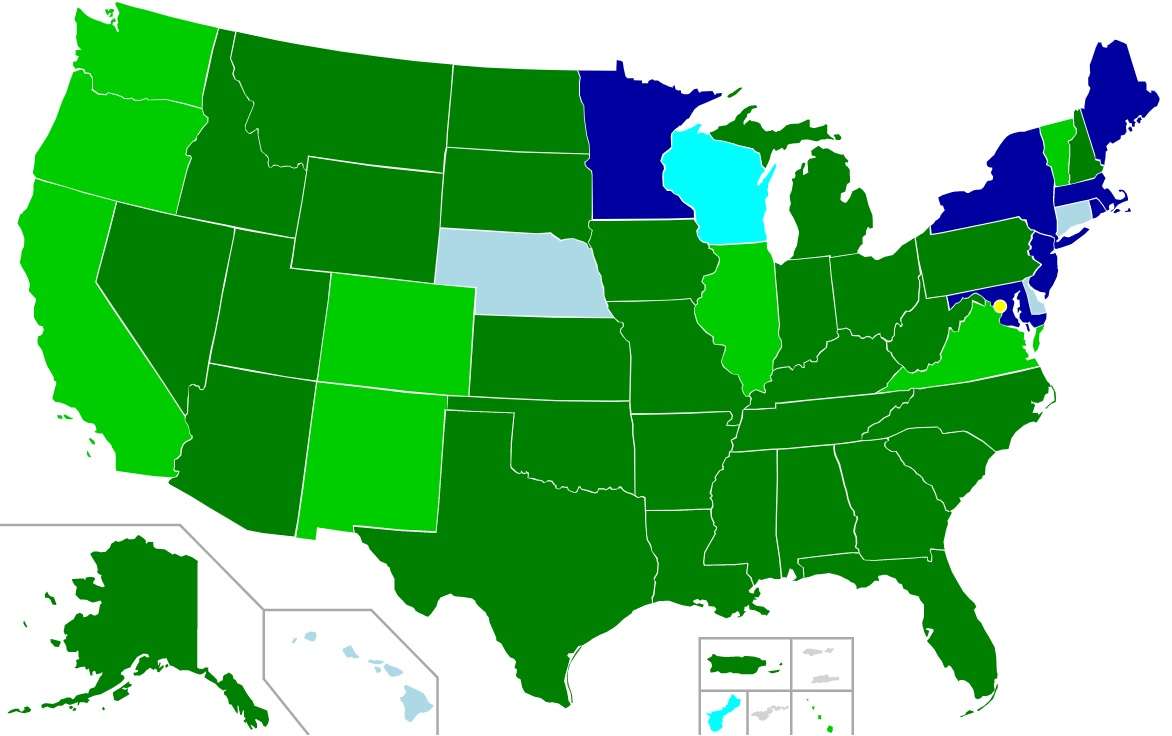
What good is an AR-15 against an oppressive government armed with tanks and bombers? That’s the question gun owners often get asked, as if the destructive power of the modern state is a mic-drop argument against private weapons ownership. That might be a bit more convincing if resistance fighters didn’t repeatedly go up against well-armed troops with whatever weapons they can make or scavenge in hopes of gaining breathing room and forcing change. Sometimes, they even win, and their chances would undoubtedly be better if they had better tools at hand to begin with.
“Every day, when Ko Win Kyaw goes out to demonstrate against the Myanmar military, he carries his slingshot and a supply of rocks as ammunition,” Richard C. Paddock reported for The New York Times on April 17. “What began as peaceful protests after the Feb. 1 coup rapidly grew into a resistance movement, with citizens defending themselves using slingshots, homemade air guns, old hunting rifles and firebombs.”
Despite endorsement for resistance efforts from the pro-democracy shadow government facing off against the ruling junta, Reuters emphasized that a loosely organized group “[a]rmed with a few hunting guns made by village blacksmiths, catapults, some airguns and Molotov cocktails … were no match for forces hardened by decades of conflict and equipped with combat weapons.”
But, despite the paucity of their arms and training, the fighters gave government forces a day-long battle. They had to turn, at least for the time being, to makeshift weapons because the regime spent years trying to keep the population disarmed so that it wouldn’t have to face serious resistance.
“In Myanmar, civilians are not allowed to possess any firearms,” notes the University of Sydney’s GunPolicy.org.
“There were gun licenses issued under the [totalitarian Burma Socialist Program Party, or BSPP] government starting from 1977 but only to those who were fully-fledged party members and serving on duty in BSPP,” according to The Irrawaddy, which covers news in the region. “But after the 1988 pro-democracy uprising, [the military] revoked gun licenses and recalled guns.”
Denied legal access to guns by a brutal government that feared resistance, the people of Myanmar are still willing to fight, but must scrounge the tools for doing so where they can be found.
“We have no choice but to arm ourselves,” one activist told the U.K.’s Sunday Times.
Pro-democracy protesters in Hong Kong found themselves in a similar situation when China moved to crush the liberties of the semi-autonomous region.
“Hong Kong protesters shot bows and arrows and hurled petrol bombs from a barricaded university campus on Sunday, as police charged and charged again, firing tear gas and blue liquid from water cannon after fiery clashes overnight,” CNBC reported in 2019. “Parts of the Hong Kong Polytechnic University campus looked more like a fortress with barricades and black-clad protesters manning the ramparts with improvised weapons-like bricks, crates of fire bombs, and bows and arrows at the ready.”
Civilian firearms ownership isn’t entirely banned in Hong Kong, but it is severely restricted and rules were tightened in 1999, after the handover of the territory by Britain to China. Hong Kong’s pro-democracy protesters clearly understand their disadvantage, since at least some have waved signs reading, “We need the 2nd Amendment.”
But Hong Kong residents don’t have legal protections for their right to bear arms, and the pro-democracy movement has faltered under the weight of government force. Headlines now focus on the jailing of activists rather than street protests. Maybe that’s support for the argument that resistance is futile against the modern state.
“[I]t would be a short war my friend,” Rep. Eric Swalwell (D-Calif.) snorted in 2018 to a critic promising to defy gun restrictions. “The government has nukes,” he added, raising the prospect of U.S. forces incinerating all of Phoenix or Houston to suppress guerrillas intermingled with the population.
Domestic atomic warfare seems unlikely, though, given that the U.S. never nuked Afghanistan despite two decades of continuing conflict. Nor did the rest of America’s modern arsenal ultimately prevail against insurgents largely armed with variants of the AK-47, Russia’s counterpart to the AR-15.
“There has been no cease-fire agreement and high levels of insurgent and extremist violence continued in Afghanistan this quarter despite repeated pleas from senior U.S. and international officials to reduce violence in an effort to advance the peace process,” the Special Investigator General for Afghanistan Reconstruction’s 50th quarterly report to Congress noted earlier this year.
“We cannot continue the cycle of extending or expanding our military presence in Afghanistan — hoping to create ideal conditions for the withdrawal and expecting a different result,” President Joe Biden conceded on April 14, as he announced an end to America’s role in the country.
This isn’t to say the Taliban are a sympathetic bunch. Their brutality and authoritarianism make them anything but freedom fighters. But they proved their effectiveness, at great cost, against a modern military force. Pro-democracy forces in Myanmar, Hong Kong, and elsewhere might hope for similar hope of success (though they’d no doubt want a shorter, less-bloody conflict). Their chances would certainly be improved with access to weapons like the AR-15.
True, the United States isn’t Myanmar, nor is any part of it under the thumb of something like China’s totalitarian regime. But just months ago Rep. Eric “the government has nukes” Swalwell insisted that “democracy is under assault” from departing President Donald Trump. Last year, then-presidential candidate Joe Biden insisted his opponent “further threatens the future of our democracy.” They clearly believe—with considerable evidence, though their faction shares blame—that America’s political system isn’t as secure as we like to pretend, and that it risks falling into authoritarian hands.
Just in case their fears come true, people worried that authoritarianism will come to America might want to learn from pro-democracy activists elsewhere. That requires treating efforts at civilian disarmament as even more reason to keep the tools for self-defense close to hand.
from Latest – Reason.com https://ift.tt/3sDQjII
via IFTTT







